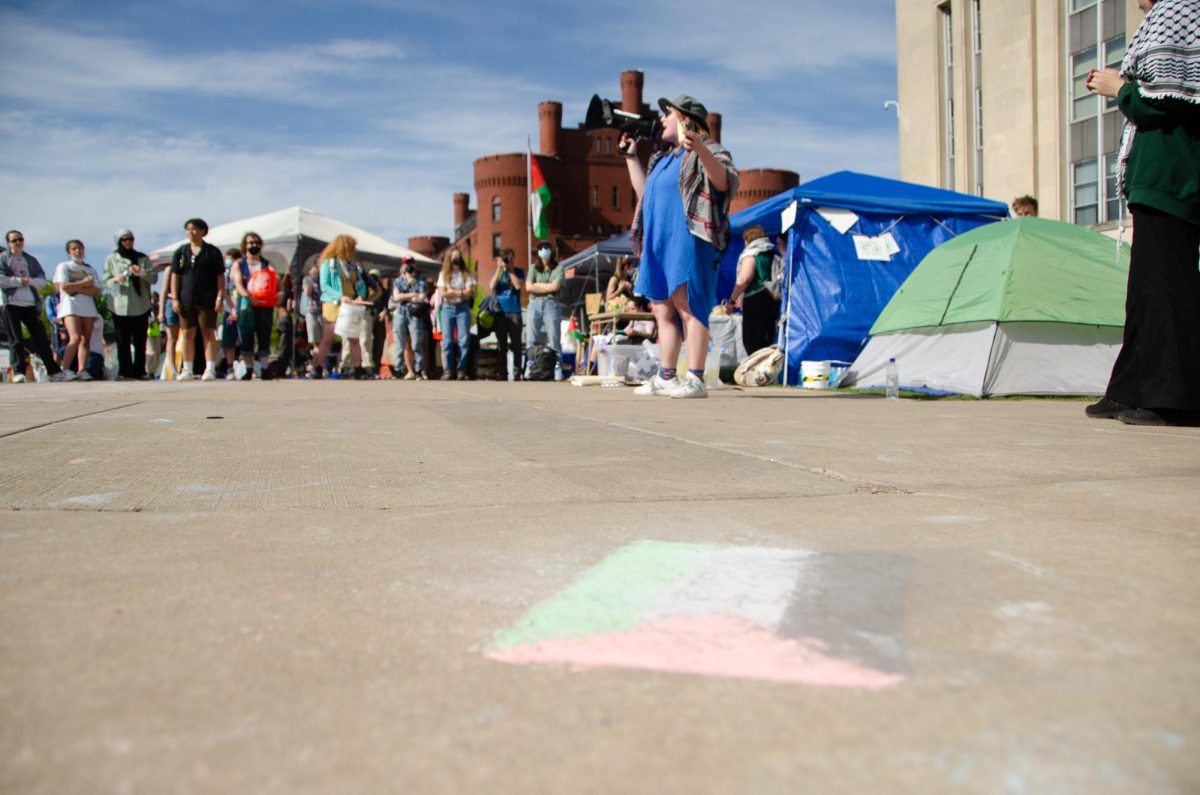President Barack Obama’s election was one of the most historic events in the past decade as his inauguration marked the United States’ first black president.
However, that was not the only effect Obama has had on this country. A recent study by the University of Wisconsin, in collaboration with Florida State University, shows since Obama’s entrance into the public limelight, implicit prejudice toward blacks has decreased significantly — a phenomenon known as “The Obama Effect.”
UW graduate student William Cox and UW Department of Psychology Chair Patricia Devine worked with FSU associate professor of psychology and UW alumna Ashby Plant along with a few of her graduate students to study the level of implicit prejudice toward blacks in college students on both campuses.
Implicit prejudice is an unconscious, knee-jerk reaction that cannot be consciously controlled. This can be measured by the Implicit Association Test, which is designed to measure the strength of automatic association between mental representations of objects in memory.
The study originally began during the primaries and was originally unrelated to Obama’s political rise. However, after seeing the drastically decreased levels of unconscious prejudice, Devine suggested the decrease was due to Obama’s increasing popularity.
After adding measures to assess Obama’s influence, Cox found Obama had a significant effect on implicit biases.
The test
So far, two different studies have been conducted to measure implicit prejudice — one asks only about general prejudices and the other includes additional questions concerning Obama.
In both studies, respondents were given two types of IATs: stereotyping and evaluative.
The first measures the respondent’s overall unconscious stereotypes of blacks regarding physical or mental superiority by making him/her sort black and white faces according to their ethnicities in conjunction with sorting words by mental or physical categories.
The second IAT measured respondents’ evaluative prejudices toward blacks by replacing “physical” and “mental” with “pleasant” and “unpleasant,” making the participant sort words and faces based on those categories.
Interest on the tests centered on the difference in speed with which the participants completed the trials, specifically regarding when the test switched from white being associated with pleasant or mental to blacks being associated with those words and vice versa.
While that is where the first study ended, the second study delved deeper, asking participants to complete thought listing tasks. This part of the test asked questions such as what words came to mind when they think of blacks and how does the participant think others stereotype blacks.
Researchers recorded whether Obama or other positive public figures, such as Martin Luther King Jr., were listed.
“By having undergraduate students come in and complete a measure that’s been used throughout the country to assess this implicit prejudice, we wanted to see (if) could we link that to factors that would suggest it might be due to Obama?” Plant said.
The first study tested was conducted using 74 white American undergraduates at UW. The second study tested 229 UW non-black undergraduates, 64 percent being female and 80 percent being white.
The results
In the past, white Americans had consistently shown some level of racism towards blacks. When these tests were done previously using the same IATs, white participants typically showed high levels of anti-black bias.
“Prior to data collection, we had seen the majority of our white college students showed bias on implicit measure of bias favoring white Americans or black Americans,” Devine said. “It’s not something (we’re) intentionally reporting. … It seems to reveal something about underlying associations.”
However, the original study showed participants showed no mean level of bias on either of the stereotyping or evaluative IATs, meaning anti-black and pro-black bias were almost at a 50-50 ratio.
The second study was conducted to link Obama to the decreased level of implicit bias and to measure whether Obama came to mind when others thought of black people.
The results of the second study echoed those of the first, with no mean level of anti-black bias evident in either of the IAT tests. Also, participants who listed Obama or another positive black role-model on the thought listing task were found less likely to respond with anti-black biases on the IATs.
These results are significantly different from those found in the last study, conducted in 2006, which reported a mean evaluative and stereotyping score ranging from a 32 to 51 percent and a 15 to 29 percent anti-black bias respectively (see graph).
“Obama’s meteoric rise to fame and success in first democratic primaries, then on into presidential campaign, then being elected seems to have produced a strong change in underlying associations whereby the percent of research respondents no longer factor white over blacks — a 50-50 split,” Devine said.
The significance
This enormous change in implicit prejudice among black and whites in recent years is extraordinary, according to researchers, and could have an enormous impact on today’s society and the way we as a community think.
“The significance is potentially extraordinary,” Devine said. “We have a naturally occurring sequence of events whereby an individual has rose to prominence, and by his very presence seems to have influenced the underlying associations people carry around with them in their minds with regard to black Americans.”
According to Devine as well as Cox, Obama’s rise to power has seemed to change the way white Americans fundamentally think about blacks.
“I think it’s really great because it shows that Obama’s having an influence on people’s minds, not just as the leader of our country and with the policies he’s going to make but also on these kinds of implicit biases that actually affect how white people in America treat black people on a day-to-day basis and how they interact with them,” Cox said.
However, none of the researchers are sure whether this change in attitude will be constant or whether it will change with the times.
Plant said while she hopes these levels of implicit prejudice remain low, it is possible that over time, Obama will stop being a strong figure in people’s minds. They also might stop thinking about his ethnicity and focus solely on his role as the president.
Overall, the results bode well for the direction of our country, according to Cox, who said that scores on these IAT tasks have previously been linked to real world behaviors such as making eye contact with black people and sitting closer to them in interviews.
Cox also looks to explore whether this trend will continue through the presidency to see if Obama really does have an effect on how prejudiced whites in America are.
The next step
After showing a lowered level of implicit racism since Obama’s inauguration, Cox hopes to continue his study by tracking Obama’s presidency in conjunction with the level of public implicit racism.
“There could be major events that are threatening his optimist node. We want to look at whether there is a shift in explicit and implicit levels that follow from positive or negative events,” Devine said. “We want to follow the major historical events unfolding during his presidency… (to) see the extent to which Obama is held responsible or given credit for events.”
In his proposal, Cox asks two questions: “With time, will President Obama be ‘subtyped,’ resulting in a return to previous patterns of bias? If President Obama mishandles a crisis or is tainted by a scandal, will his position as a positive exemplar also be tainted and negate his positive effect on implicit race bias?”
He has already begun his study by running UW undergraduate participants through the same test given in study two, with a few changes.
In the new study, two different types of tests are given. The first asks open-ended questions regarding thoughts and feelings toward blacks in general. The second test asks the same set of questions as the first and then follows up with questions regarding Obama, so as to implant his image in the minds of respondents while taking the rest of the test.
In addition to the IATs, Cox added questions that ask respondents to compare Obama to other blacks to measure whether people “subtype” him or, in other words, see him as a positive exception to their normal prejudices regarding blacks. According to Cox, this is something that often happens with famous people of a different ethnicity.
Finally, the respondent is asked to rate their feelings toward other ethnicities, including Asian Americans and Hispanics, on a thermometer scale, 100 degrees being warm and zero degrees being cold, in order to gauge their conscious bias.
Besides the fear of subtyping, one of the main reasons for this study is to track levels of implicit prejudice through Obama’s presidency.
“I just think that this is a really interesting effect, and I want to see how much of this is just tied specifically to Obama and his image,” Cox said. “If he screws something up or if there’s some kind of big scandal that taints his image, is that going to affect the way white America perceives blacks in general?” These studies both took place at UW. There was a third study at FSU, but you haven’t talked about it.











